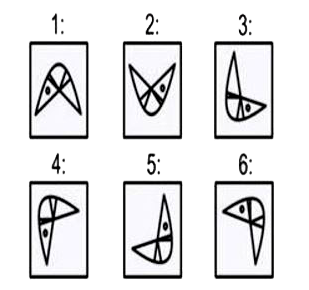Identify the stationary objects.
Tree
School building
Earth
Both (a) and (b)
The correct Answer is:D
To identify stationary objects, we can follow these steps:
1. Understand the Definition of Stationary Objects:
- Stationary objects are those that do not change their position over time. They remain fixed in one place and do not move.
2. Identify Examples of Stationary Objects:
- Look for objects that are firmly in place and do not exhibit any movement.
- Common examples include:
- A tree: Trees are rooted in the ground and do not move from their location.
- A school building: Buildings are constructed on a foundation and do not change their position.
3. Differentiate from Moving Objects:
- Consider objects that do move. For example, the Earth rotates and revolves around the Sun, which means it is not a stationary object.
4. List the Stationary Objects:
- Based on the examples, we can conclude that:
- The tree is a stationary object.
- The school building is also a stationary object.
5. Final Conclusion:
- The stationary objects identified are the tree and the school building. Therefore, the correct answer is that both the tree and the school building are stationary objects.
- Stationary objects are those that do not change their position over time. They remain fixed in one place and do not move.
- Look for objects that are firmly in place and do not exhibit any movement.
- Common examples include:
- A tree: Trees are rooted in the ground and do not move from their location.
- A school building: Buildings are constructed on a foundation and do not change their position.
- Consider objects that do move. For example, the Earth rotates and revolves around the Sun, which means it is not a stationary object.
- Based on the examples, we can conclude that:
- The tree is a stationary object.
- The school building is also a stationary object.
- The stationary objects identified are the tree and the school building. Therefore, the correct answer is that both the tree and the school building are stationary objects.
Topper's Solved these Questions
- MOTION AND MEASUREMENT OF DISTANCESBOOK - MTG IIT JEE FOUNDATIONCHAPTER - MOTION AND MEASUREMENT OF DISTANCESEXERCISE - EXERCISE(MULTIPLE CHOICE QUESTIONS LEVEL-2)
20 Videos
- MOTION AND MEASUREMENT OF DISTANCESBOOK - MTG IIT JEE FOUNDATIONCHAPTER - MOTION AND MEASUREMENT OF DISTANCESEXERCISE - EXERCISE(FILL IN THE BLANKS)
7 Videos
- MOTION AND MEASUREMENT OF DISTANCESBOOK - MTG IIT JEE FOUNDATIONCHAPTER - MOTION AND MEASUREMENT OF DISTANCESEXERCISE - NCERT SECTION (Fill in the blanks.)
5 Videos
- LIGHT, SHADOWS AND REFLECTIONSBOOK - MTG IIT JEE FOUNDATIONCHAPTER - LIGHT, SHADOWS AND REFLECTIONSEXERCISE - OLYMPIAD/HOTS CORNER
15 Videos
Similar Questions
Knowledge Check
Identify the dissimilar object from the below given objects
 A2B3C5D1
A2B3C5D1An observer moves with a constant speed along the line joining two stationary objects. He will obserbe that the two objects
Ahave the same speedBhave the same velocityCmove in the same directionDmove in opposite directionAn observer moves with a constant speed along the line joining two stationary objects. He will observe that the two objects
Ahave the same speedBhave the same velocityCmove in the same directionDmove in opposite directions
State true (T) or false (F).
Force can stop moving objects, but it cannot move stationary objects.
View SolutionA boy moving with a velocity of 20kmh–1 along a straight line joining two stationary objects. According to him both objects
View SolutionObject A strikes the stationary object B with a certain give speed u head-on in an elastic collision. The mass of A is fixed, you may only choose the mass of B appropriately for following cases. Then after the collision:
View SolutionA man is sitting inside a moving train and observes the stationary objects outside of the train. Then choose the single correct choice from the following statements−
View SolutionIn stationary waves
View Solution
